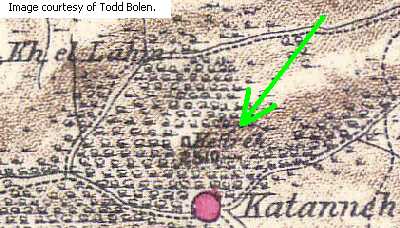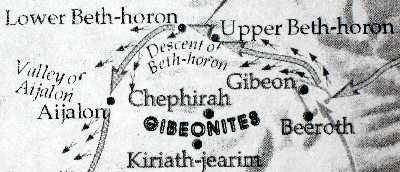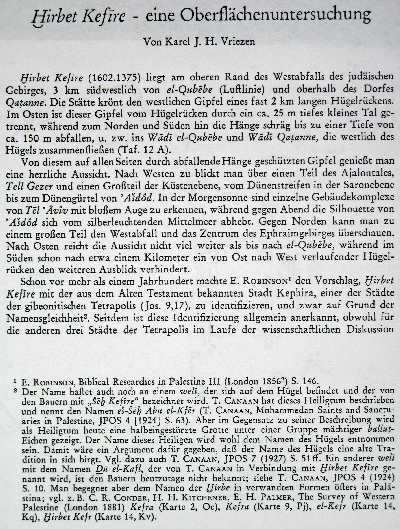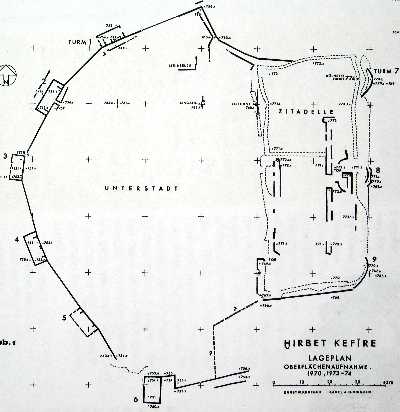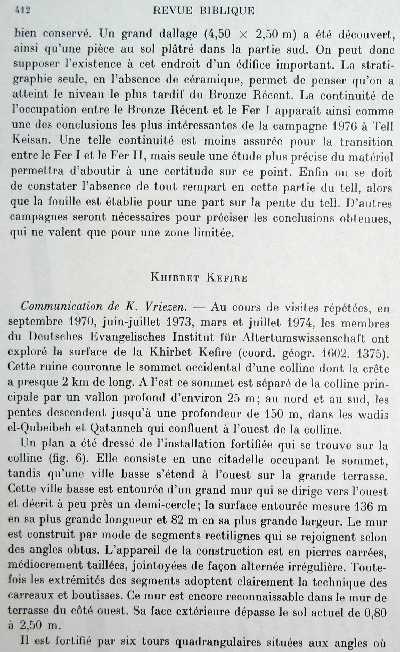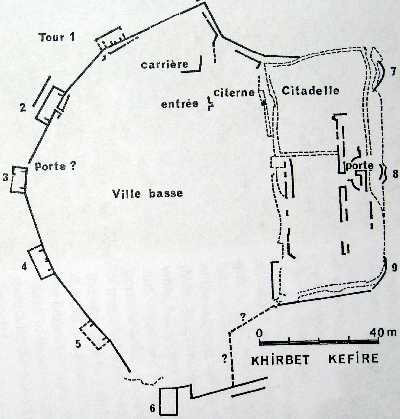When I first received notification from the Director of Creation Evangelism at
Answers in Genesis [AiG], Cecil
Eggert, that I'd be having breakfast with Ken
Ham & their wives, I knew I'd be blogging about it, & immediately determined the title would be this takeoff on
the Dr. Seuss classic!
Nebuchadrezzar/Nebuchadnezzar, king of ancient Babylon, was the first king mentioned in the Bible as being
a "
king of kings" (MLK MLKYM in Ezekiel 26:7 & MLK MLKYA in Daniel 2:37); Artaxerxes, from the Persian empire, was the 2nd (again, the Aramaic MLK MLKYA in Ezra 7:12). Jesus Christ is 3rd on the list, & even though Revelation applies the title twice (BASILEUS BASILEOU in 17:14 & 19:16), only Paul (1Timothy 6:15) qualified His title with the definite article:
the King of kings (O BASILEUS TOU BASILEOUTOU).
Being
the King of kings means that there are kings to be
the King over; & the undisputed king of Young-Earth Creationism is
Ken Ham, the president & CEO of AiG.
On Saturday, Jan. 26th, I attended an evening worship service at
Grace Chapel in Lancaster, CA. Not only had I never been to this particular place of worship, but I had never even been to Lancaster (about a 90-minute drive from Redondo Beach when there's no traffic jam, & there was no jam on this occasion ... [
Thank you, God!]). Along the way, I was treated to some spectacular geologic formations on either side of Hwy 14, demonstrating the aftermath of the Genesis Flood. Never had I seen so many near-vertical strata.
Here's
a link to a nice page documenting them--notice in particular photos
18 &
19 along Hwy 14.
I later learned that one group in particular near the
San Andreas fault line that terminated abruptly in mid-air are called
Vasquez Rocks--a national park where TV shows & movies have been filmed. Here's a view from above courtesy of
Google Earth:
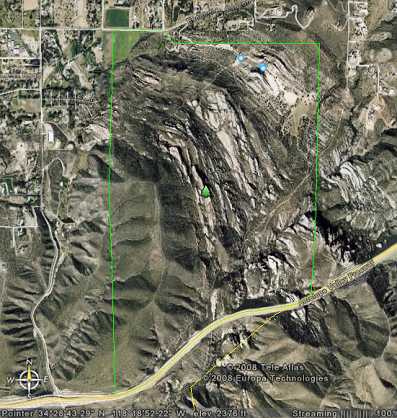
When I arrived, I got a kick out of the church bulletin welcoming visitors, with an offer for a "
king size candy bar":

After half an hour of song, an offering, & ministry news by the local pastor (Chris Johnson),
Mr. Ham began his lecture, entitled:
Genesis--Key to Reaching Today's World.
Most of his material consists of the same-old, same-old good news he's been preaching for many years, but he does a great job of keeping it fresh & updated. The most impressive highlight now is his use of videos that have been produced for the
Creation Museum, which just opened last year. These
videos just became available on DVD at the end of last year. They are of such high quality (typical of AiG), that Mr. Ham said, "
You'll think the Discovery Channel got converted!"
The 1st one he showed was on the complexity of eyeballs, juxtaposed with manmade cameras. Then he highlighted a
widely publicized quote from the idiot (my terminology for the shooter, not Mr. Ham's) who went on a shooting spree at Jokela High School in Finland back on 11-7-07. He pointed out that this person was only being consistent with the religion being taught in Science classrooms around the world.
Next he showed how numerous church buildings in England have been converted for other uses such as bars, shops--even a tattoo parlor. Why? Because relatively few Europeans worship God. Why? Because they view Genesis as a myth. Why? Because church leaders, who were supposed to watch for our souls (Hebrews 13:17), compromised with evolutionists in their mythological belief of millions of years.
Ken Ham is a master of graceful transitions from absurd humor to sobering reality, & back & forth.
Take, for instance, when he pointed out common challenges faced by preachers today as they explain foundational principles from Genesis 1-11. Peter & Paul didn't have to contend with questions like, "
Hey, Apostles Peter & Paul, what do you do with dinosaurs?" "
Excuse me, Martin Luther, what do you do with radiometric dating?"
Next point: Our enemy's tactics have never changed. Genesis 3:1 is just as relevant today as it was when Paul penned 2Corinthians 11:3-4. Later this year, he said AiG will be formally publishing the results of a survey of young adults, which reveals that most of them who entered public schools believing in God, graduated disbelieving in God; & the main reason is that they
learned to doubt the Bible.
Then he asked the congregation (somewhere in the neighborhood of 600-700 by my estimate) why they believe in Jesus. And the answer is the same as it was in 1Corinthians 15:3 & 15:4--"
The Scriptures". Again, he emphasized the problem facing the church world today is because of pastors who compromised the historicity of Genesis. It's impossible to understand why there's Death & Suffering today unless you have a proper understanding of history recorded in Genesis.
Halfway through his lecture around 6:35, he reassured us that he was "
almost near the end", but quickly added, "
I always say that ... What time am I supposed to finish this anyway? 7:30? 8:00? What time is it now?" Again, a great transition from the preceding subject--I love that!
What does Ken Ham love? Matthew 19:4-6: "
Have ye not read? ..." He loves how Jesus certainly wasn't embarrassed about the history recorded in Genesis.
He played another museum video--one on Mt. St. Helens, featuring amazing similarities between that observed catastrophe, & the unobserved one that formed Grand Canyon.
Here I have to say, that even though I own these DVDs, the way he presented them during this lecture just really gave them a more memorable context. I can't imagine how anyone could watch this 2-minute video & still
choose to believe Grand Canyon was formed over millions of years. Unfortunately, most scientists, particularly geologists, have never had the opportunity to see/hear this sort of argument from an alternative interpretation. It's truly sad. But as Mr. Ham noted from Psalm 11:3, if your foundations are destroyed, what can you do?
He closed his lecture with the riveting 2-minute dramatization of the Flood's initiation, from the thunderous, silence-shattering closing of the ark's door, to scared fish at the bottom of the ocean as the "fountains of the deep broke", then following a monstrous, God-only-knows how high, indiscriminate tidal wave as it swept over the land. Makes ya wonder how high the water has to rise before some people will focus on the possibility that God exists, & that they will be held accountable eventually whether they want to be or not.
Well, the next day, I decided to go back for
2 more lectures held at
Lancaster's fairgrounds, in the Poppy Pavilion. They were scheduled for the evening, & I decided to take a small detour to the
Hebrew Union College library near downtown L.A. to check/copy some material for a very important LMLK subject I'll be discussing in a separate blog.
One small problem ... somebody decided to hold the 14th Annual
SAG Awards--
without my permission--at the adjacent
Shrine Auditorium!
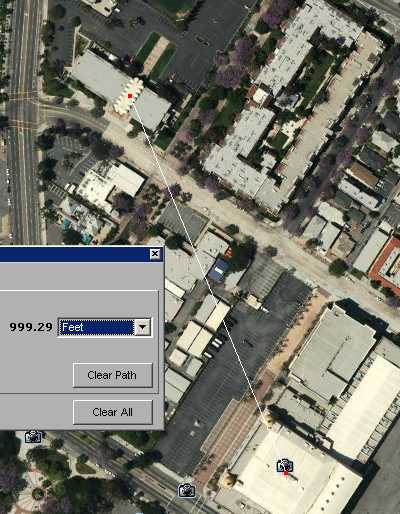
In this image (also courtesy of Google Earth), the Shrine is in the bottom-right, & I drew a line connecting it to the library in the top-left. The police had the entire block around the auditorium barricaded off, & what's worse--they were using the library parking lot for limo drivers after dumping off the actors & actresses. When I
realized that this may be the closest I ever get to Angelina Jolie in the flesh (<1,000 feet!) made the academic decision to press onward for the sake of scholarship despite my great tribulation, I went around the block, got in line with all the black stretch-limos & massive black hummers (I drive a green mini-SUV), & entered the library's lot, where I was greeted by a beefed-up bouncer who looked at me like, "
You can't be serious, can you?"
Before he could say it, I rolled down my window & said, "
I just need to visit the library for 15 minutes." He actually let me park! I went in, found my LMLK material, & exited 15 minutes later as promised. Despite all the commotion, & some fierce rain along the way, I was still able to get to Lancaster on time with about 5 minutes to spare! Either God answers prayers, or I was extremely lucky on Sunday! (Not quite Abiogenesis-odds lucky, but lucky still the same!)
After a couple of songs, Chris Johnson introduced Ken Ham with a
cute anecdote about meeting him in an Atlanta airport. He knew who he was, & was trying hard to persuade him to lecture at his church in California. Well, Pastor Johnson's mother, who was watching from a distance, knowing her son's desire to introduce lost souls to the Lord, later asked him,"
Did he get saved?"
That was funny enough, but then Mr. Ham opened the lecture by commenting on all the rain we'd been having, & said in his Australian accent, "
It's all because of Global Warming, y' know..." I really love this guy! Later, he told us that when reporters ask him if he believes in Global Warming, he says, "
Yes, Earth has been warming up ever since the Flood, & is going to continue warming, until it burns up!"
(Note--actually, what he means is that it's been warming since the Ice Age caused by the Flood, but most reporters don't have enough of a background in the Bible or Science to understand technical details like that.)
About 1,500 people attended this lecture, & since technically it wasn't a worship service, there were a bunch of kids & teenagers creating distractions. Most of the crowd was respectful, but
it only takes a few undisciplined brats to spoil an entire occasion. During intermission between sessions, I switched to a different section, but encountered the same problem. (
Sigh.)
He entitled this 1st lecture
The Loss of Biblical Authority & the Age of the Earth, & at the outset stated a desire to address 3 questions:
- The age of the Earth--Does it matter?
- Six literal days or long periods of time?
- Is there evidence for a young world?
It ran from about 6:10 to 7:25, & like the night before, featured several of the newly produced videos from the museum. One was about coal, noting that it takes about 10 feet of plant material to form 1 foot of coal, & that the lack of roots running through coal seams indicates that these massive layers were produced in a short, singular event--not over many thousands or millions of years.
During this 1st segment, he briefly discussed alternative interpretations of Genesis such as the Gap Theory, Day-Age Theory, Theistic Evolution, Progressive Creationism, Local Flood Theory, & Framework Hypothesis. He made the point that they were all inspired by the common belief in millions of years of time. Theologians who promote those interpretations insist that "day" in Genesis 1 doesn't mean an ordinary day; it could mean thousands or millions of years.
So in the 2nd segment, he focused on the Hebrew word for "day", which was used 2,301 times in the Old Testament. Furthermore, 410x it appears with a number, & is always translated as an ordinary day; 38x "evening"
& "morning" are used without "day", in the context of an ordinary day; & 23x "evening"
or "morning" are used with "day" for an ordinary day.
To reinforce the point with humor, he showed
an extremely cute cartoon of a very old, frail-looking man using a walker to march around Jericho, & asked rhetorically if Joshua marched for 7 days or 7 thousand years. He also showed a cartoon of an old man in a very tired-looking, wrinkled-skin whale wearing glasses, & asked if Jonah was in the fish's belly for 3 million years (sorry, I was not able to find a link to this one online, but you can easily imagine it after seeing the one of Joshua at Jericho in the link above).
In the 3rd segment, he emphasized that 90% of the scientific processes used by Evolution proponents actually give ages for the world in less than billions of years. The evolutionists merely ignore them because they don't support their belief.
One is
the amount of salt we can measure filling seas today; another is the deposition of sediment on the ocean floors; another is
the wood in basalt rock at the Crinum Mine; & again, ending on a humorous note, he showed the famous photos of
a spark plug in a rock, & his personal favorite--
a petrified hat!
He closed this segment by showing the museum video on the Ice Age, which probably occurred shortly after the Flood due to all the volcanism warming the waters to cause precipitation, & atmospheric ash blocking the sun to cause significant snowfall. After the video, Mr. Ham emphasized that secular models to explain multiple Ice Ages are in flux & uncertain, while a global flood is a stable/reliable model; & we'll never experience another Ice Age because there will never be another global flood.
At the intermission, which some people refer to as either a "coffee break" or a "potty break", he said that AiG prefers to call them "book breaks" so that attendees can shop in the lobby for AiG books & videos! He always makes 2 funny remarks as he shows slides of material for sale:
"
People who are new to the Creation/Evolution debate, always ask me, 'If I only get one book, which would you recommend?', & I say, 'These seven.'"
"
And here's one geared toward children ... which means moms & dads will be able to understand it. ... And if they still can't understand it, they can ask their children to explain it to them."
After a 20-minute break (during which time I spent a few moments chatting with Mrs. Ham as we watched the crowds anxiously perusing & purchasing AiG's publications), he continued with a 50-minute lecture entitled
Defending the Christian Faith in Today's World.
Whereas his other lectures are more run-of-the-mill textbook-based, this was more of a passionate, engaging discussion about the differences between the views held by evolutionists & creationists. He quoted extensively from atheists (primarily Carl
Satan Sagan &
Dick Richard Dawkins [
strikethrough-humor by me, not Mr. Ham]) & the Bible (listed here in order of appearance: Romans 1:20-1; Romans 10:17; Matthew 12:30; James 4:4 Romans 1:18-9; Romans 8:7; Colossians 2:8; Isaiah 55:11; Ephesians 2:1-2; Ephesians 2:8 2Peter 3:9; Romans 10:14-5; 1Peter 3:15; 1Corinthians 1:21; Hebrews 11:6; & Romans 10:9).
Probably the most emotional moment was after Ephesians 2:1-2, when he pointed out that we can't raise our opponents from the dead; only God can. All we can do is study & present this information to them, then "
relax" while the Holy Spirit does the hard work.
Our breakfast on Wednesday morning was not the first time I've dined with a celebrity (& even if you've never heard of Ken Ham, he really is an international celebrity who has been interviewed by every major English-speaking news organization on the planet, plus many foreign-language ones).
Back in 1984 when I moved to California, before I became a Protestant, I joined
SPERDVAC, & at their annual banquet, I shared a table with 2 well-known character actors featured in numerous episodes of
"I Love Lucy" (
Jerry Hausner, who co-starred on
the historic, pilot episode, & had a recurring role as Ricky's press agent at the Tropicana;
Herb Vigran, who played the police officer who confronted Lucy & Ethel
when they worked as Martians for a publicity stunt on the roof of the Empire State Building--he was frozen by their ray guns; if you read the IMDB pages I linked to, the credits for these 2 gentlemen read like a history of radio & TV in America during most of the 20th century).
It was an incredibly great honor to spend what turned out to be 75 minutes with Mr. Ham; I initially expected only about 30. By the conclusion of our breakfast, the consensus opinion was that I definitely had "
zeal" for the Lord, & for AiG's ministry thereto! Since none of them knew much about me beforehand, other than that I was a strong supporter of AiG, I came prepared to
answer 2 questions:
- What do you do for a living?
- What do you do in your spare time?
I had the 1st one pegged--that's the first that both parties asked me (separately, as they hadn't arrived at the same time). I explained that I had the good fortune of earning my living by 1Thessalonians 5:21--I test all things, & keep what's good! (I've never memorized any verses until I began working on Genesis last year, but that one came naturally.)
The 2nd one turned out to be a real curve ball regarding marriage, children, & dating (not necessarily in that order).
I can't remember exactly what triggered it, but towards the end, after we had finished our meals, I just began telling them that my hobby is LMLK research, & asked if they had a few minutes to see some show-&-tell items. I showed them a photo of
Timnah jar #7202-2, & passed around
Redondo #62. I told them about the material I've studied in museums & published, & also showed them a
9-26-1948 FDC. I capped my 2-minute lecture on King Hezekiah by showing them the
Amariah Hannaniah bulla.
Before parting company, they presented me with some promotional gifts including 4 of the Creation Museum DVDs mentioned above:
- Six Days, for anyone who's not familiar with the literal interpretation of Genesis 1.
- Flood Geology, for anyone who doesn't know there's scientific evidence for a global flood, even if you don't believe the Genesis version.
- The Last Adam, for anyone who doesn't understand the concept of Christ's atoning sacrifice, & how it relates to Genesis.
- Created Cosmos, for everybody else--this is my favorite of the entire 8 DVDs played at the museum, & you can preview it on AiG's website at this link (click "View sample video" just under the price along the right side).
I thought it would be fun pass these along to anyone with a DVD player interested in the subject, but not already a Young-Earth creationist, who happens to discover this blog. So first-come, first-served. Scoffers & critics welcome! Feel free to include a personal insult directed towards me, AiG, or God (since Evolution proponents can't disprove Young-Earth creationism, & since they're infuriated by how easily the same evidence that supports their position also supports our position, the only arguments they have are ad hominem). You can request one by writing to me via the address provided along the left-side menu found on any page of
The LMLK Research Website. Please make sure you put something attention-getting in the mail's subject so it won't be flagged as spam & trashed (& please do your best to compose the insult without relying on profanity, since that will be trashed as well; even if you've never applied your brain in a Science class, you're gonna have to use it now if you want one of these DVDs). I'll add a message to this blog when all 4 DVDs have been claimed; any not claimed about a month from now will be donated to local libraries.
All in all, it's been a landmark/historic week for me personally, which is why I put all the effort I did into this particular blog entry. I've been flooded with fond memories, & inundated by blessings!
Song of the week:
"Five Feet High & Rising" by Johnny Cash (click the song title to visit Amazon;
click here for a 29-second sample; 360kb).
G.M. Grena


